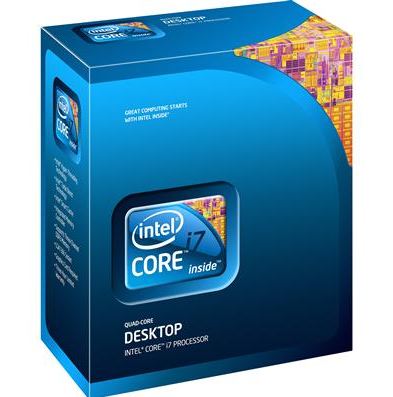Final thoughts and rating
Intel's latest and greatest desktop processor technology now resides in two Sandy Bridge-E chips launched just the other day. The Core i7 3930K CPU sits below the Core i7 3960X in the pecking order, but don't let that fool you into thinking it's a manifestly poorer cousin.
Sharing many of the performance qualities of the $999 range-topper and performing very closely in our benchmarks - through which is ploughs through with gay abandon - the $564 (£450-plus) 3930K chip is particularly suited to workloads that stress the CPU's sheer grunt, which is considerable as it uses six cores and 12 threads when the situation demands.
Excitement at the arrival of this benchmark-pulverising slab of silicon is tempered the knowledge that, while undeniably quick, Intel is yet to introduce the full-chip architecture - eight cores and 16 threads - and any sensible purchasing decision must consider mainstream Sandy Bridge processors such as Core i5 2500K and 2600K, which are fundamentally cheaper, power-frugal and perform at acceptable levels for all but the most strenuous of tasks.

There exist many parallels between this Sandy Bridge-E launch - LGA2011 chip and X79 chipset - and the introduction of the Intel Nehalem-based LGA1366/X58 platform three years ago. Both offer top-dog performance, at a high cost, and are reserved for users who genuinely demand and need ultimate CPU performance. The only viable option for such folk is to invest in Sandy Bridge-E. Extending this line of logic further, the only chip you should consider is the Core i7 3930K - it performs almost as well as the 3960X processor that costs £300 more. Now, how's that for a moneysaving tip?
Bottom line: the Core i7 3930K is very much a niche product whose appeal is limited to the true power user. For everyone else, consider a mainstream Sandy Bridge chip instead.
The Good
Almost as good as Core i7 3960X, for a much lower cost
Sandy Bridge architecture on steroids
The Bad
£450-plus is still a lot of money for a CPU-only chip
Needs additional outlay for X79 motherboard
HEXUS Rating

Intel Core i7 3930K Sandy Bridge
HEXUS Awards

Intel Core i7 3930K Sandy Bridge
HEXUS Where2Buy
HEXUS Right2Reply
At HEXUS, we invite the companies whose products we test to comment on our articles. If any company representatives for the products reviewed choose to respond, we'll publish their commentary here verbatim.













